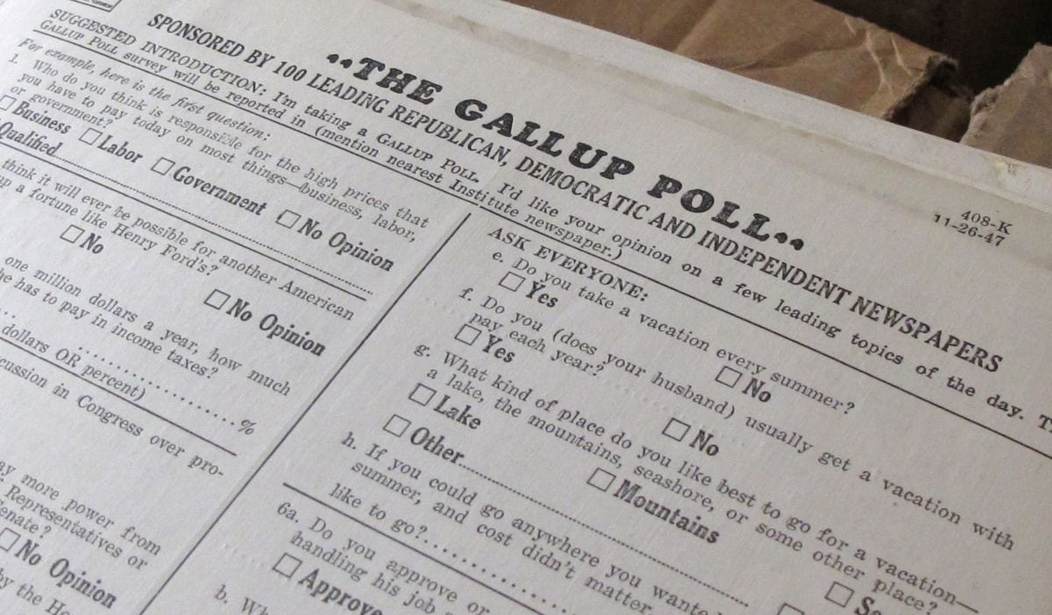Polls are only as good as the number of responses and judging by this article on the Pew website, telephone surveys are in trouble.
After hovering around a 9% response rate for several years, that number dropped to 6% in 2018. Compare that with a 37% response rate in 1997. It appears that the major reasons for this decline have more to do with advances in technology than anything else.
Among the factors depressing participation in telephone polling may be the recent surge in automated telemarketing calls, particularly to cellphones. The volume of robocalls has skyrocketed in recent years, reaching an estimated 3.4 billion per month. Since public opinion polls typically appear as an unknown or unfamiliar number, they are easily mistaken for telemarketing appeals.
In addition, new technologies sometimes erroneously flag survey calls – even those conducted for the Centers for Disease Control and Prevention – as “spam.” Numerous cellphone operating systems, cellular carriers and third-party apps block incoming phone numbers or warn users that incoming numbers are from potential scammers, fraudsters or spammers.
For pollsters, these new challenges add to a long-standing set of reasons why some people may not respond to surveys, including concerns over intrusions on their time and privacy; people feeling too busy to participate; and a general lack of interest in taking surveys.
There is something about talking to a stranger on the phone about your most personal political beliefs that has to be a major reason some people won’t talk to pollsters or give honest answers. How many people who actually respond to pollsters’ questions are giving their true opinions and not what they believe the survey taker wants to hear, or what they perceive to be the “correct” response? There are questions embedded in most surveys that seek to elicit an honest response, like asking the same question different ways several times, but this kind of bias — especially among conservatives — has to have an effect on the poll’s results.
It should be stressed that this doesn’t mean telephone polling is useless or the results invalid. But pollsters appear to be moving away from phone surveys to going online.
“That creates obvious massive problems for anyone doing telephone survey research,” said Mark Blumenthal, a pollster and co-founder of the website Pollster.com, which covered the polling industry. “The biggest problem is now about cost and the time needed to complete interviews.”
Already, many polling firms have transitioned to online surveys. Both CBS News and NBC News have commissioned online surveys. POLITICO partners with Morning Consult, an online polling vendor, for its public-opinion polling.
Pew’s move to online polling is driven partly by the increased difficulty in interviewing Americans over the phone. But Kennedy also said there are advantages to its American Trends Panel, a randomly selected, nationally represented group of people recruited to participate in its online surveys: allowing respondents to complete the surveys on their own time, and the ability to track changes in respondents over time.
“There’s definitely a lot to like about having an online panel,” Kennedy said. “And once we really started investing in our panel … we’ve really been happy with how that’s performed.”
Online polling appears to be a good solution for national polls. But what about state polls? In 2016, Trump’s victory was a surprise largely because state polls were inaccurate (national polls mostly got Hillary Clinton’s margin of popular vote victory correctly). Smaller polling outfits have been gathering smaller and smaller sample sizes for their state political polls as telephone response rates have plummeted. As it stands now, any poll taken at the state level is suspect, especially if the outcome is going to be close.
Too often, we reject polls that tell us what we don’t want to hear and embrace polls that do. This sort of confirmation bias is widespread on both sides of the political divide. It’s a certainty that over the next few election cycles, how polls are conducted will change dramatically as pollsters struggle with new technologies and a changing political climate.










Join the conversation as a VIP Member